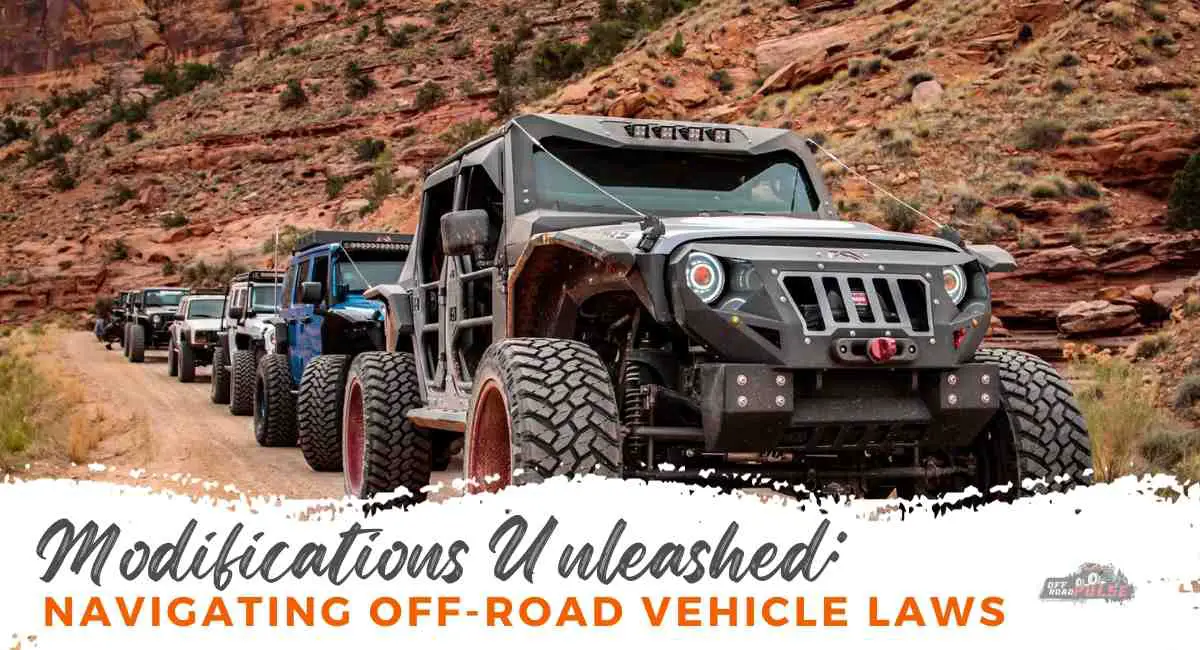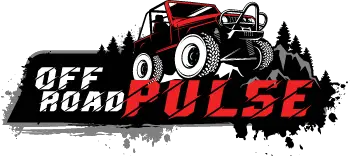More and more people are joining the off-road community to enjoy the excitement of driving through challenging landscapes. But in the midst of all this fun, it’s super important to know and follow the rules that come with off-road driving. Just like you need to follow traffic rules when driving on regular roads, off-road vehicles have their own set of rules too.
Off-road laws are not there to spoil the fun, but to make sure everyone has a good time while staying safe and taking care of the environment. What’s more, following these rules is a big part of having a great time with off-road vehicles. In this article, we’ll talk more about off-road laws and why they are crucial for a safe and enjoyable off-road experience.
Understanding Off-Road Vehicle Laws
On-road vehicles are governed by strict traffic laws and must comply with regulations related to speed limits, traffic signals, and driver licensing. Safety features such as seatbelts and airbags are mandated to ensure driver and passenger protection on regular roads.
On the other hand, off-road vehicles operate in a more specialized legal framework. While they may not need to adhere to the same traffic laws, they are subject to specific regulations regarding where and how you can operate them.
Off-road vehicle laws can vary significantly depending on the country, state, or region. These laws are designed to regulate the use of off-road vehicles and other recreational vehicles used off public roads. At the federal level, agencies like the U.S. Forest Service and Bureau of Land Management establish guidelines for off-road activities on public lands. States also play a crucial role in setting rules that take into account local conditions and concerns.
Most jurisdictions require the registration and licensing of off-road vehicles. This process may involve obtaining a special off-road vehicle license or sticker. Generally, the registration requirements can vary based on the type of vehicle and its intended use.
Many places may also have age restrictions for operating off-road vehicles. For instance, some ORVs may have age-specific regulations while others may require riders to be a certain age or have completed a safety training course.
Off-road laws may mandate the use of safety gear such as helmets, goggles, gloves, and other protective equipment when operating off-road vehicles. Compliance with safety standards is often a key aspect of these regulations.
Most areas have restrictions on modifying off-road vehicles. This can include limitations on engine tuning, noise levels, exhaust modifications, and other alterations that may impact safety or environmental considerations.
Off-road vehicles are generally not allowed on private property without the owner’s permission. Trespassing laws may apply if an off-road vehicle is used on someone’s land without authorization. Similar to on-road vehicle laws, many jurisdictions prohibit operating off-road vehicles under the influence of alcohol or drugs. Penalties for violations can be severe.
Some areas have noise regulations to limit the impact of off-road vehicles on nearby communities or wildlife. This can include restrictions on the use of loud exhaust systems. In addition, off-road laws encourage or mandate responsible riding practices, including staying on designated trails, respecting other users, and minimizing environmental impact.

Common Off-Road Modifications and Upgrades
Off-road vehicle enthusiasts often modify their vehicles to enhance performance, achieve customization, and express their personal preferences. The idea behind these modifications is to alter the vehicle’s capabilities and make it better suited to specific terrains or activities. Here are some common off-road vehicle modifications, along with their impact on performance and safety;
- Lift Kits: Lift kits are aftermarket modifications designed to raise a vehicle’s suspension to increase the distance between the chassis and the ground. The added clearance helps improve traction and stability, especially when navigating over obstacles such as rocks and mud.
- Upgraded Tires: Off-road tires are specialized tires designed for tough off-road driving conditions. Upgrading to larger and more aggressive off-road tires is a common modification among riders seeking to optimize their vehicle’s performance in challenging terrains. These tires offer improved traction, durability, and the necessary features to conquer diverse off-road environments.
- Winches: Winches are valuable tools used to assist in self-recovery when a vehicle becomes stuck in mud, sand, or other obstacles. These powerful tools are typically mounted on the front or rear of a vehicle and are used to aid in recovery and navigation through difficult terrain.
- Off-Road Bumpers: These are heavy-duty aftermarket components designed to replace the original factory bumpers on off-road vehicles. These bumpers are designed to shield the front and rear of the vehicle from damage and often feature built-in recovery points for winching.
- Skid Plates: Skid plates are protective components installed on the underside of a vehicle to safeguard the oil pan, transmission, and other vulnerable components from damage caused by rocks, debris, and rough terrain. The inclusion of skid plates helps to reduce the risk of damage during off-road exploration.
- Locking Differentials: A locking differential is a component in a vehicle’s drivetrain that ensures power is distributed evenly to both wheels on the same axle, regardless of differences in traction. The locking differential prevents wheel slippage and ensures that power is distributed equally to both wheels. This helps to improve traction, especially in situations where one wheel might lose traction.
- Suspension Upgrades: Suspension upgrades involve modifying the vehicle’s suspension system, including shocks, springs, and other related elements. These upgrades are popular among off-roaders seeking improved performance and comfort, especially when driving on rough terrain. Furthermore, high-performance suspension systems are often better equipped to handle additional loads, such as equipment, cargo, or accessories.
- Lighting Upgrades: Lighting upgrades involve adding or enhancing the lighting systems on a vehicle to improve visibility, especially in low-light conditions. These upgrades contribute to safer and more enjoyable off-road driving during nighttime riding or in areas with limited natural light. Common upgrades include light bars, auxiliary lights, spotlights, and floodlights.
- Snorkels: Snorkels are raised air intakes designed to allow vehicles to wade through water without the risk of water entering the engine. These components serve as a perfect addition for riders who frequently encounter water crossings and need to enhance their vehicle’s water-fording capabilities.
Legal vs Illegal Modifications
Off-road laws dictate that any modifications made to a vehicle must comply with regulations to ensure the responsible and legal operation of the vehicle in designated areas. As such, vehicle owners and off-roaders need to be aware of the legal implications of their vehicle’s modifications.
Typically, off-road laws require that any modifications made to a vehicle comply with safety standards. This includes ensuring that alterations do not compromise the structural integrity of the vehicle and that safety features are functional. Any modification that compromises the safety of the vehicle or its occupants is considered illegal. This may include removing safety features or using substandard materials.
In most areas, off-road vehicles are subject to emissions standards. Modifications that increase emissions beyond legal limits or tamper with emission control systems are generally illegal. This can include removing catalytic converters or altering engine components that impact emissions.
Off-road laws often include restrictions on vehicle noise levels. Any modification that might increase noise, such as aftermarket exhaust systems, may need to comply with specific noise regulations to avoid legal issues. Aftermarket exhaust systems that significantly increase vehicle noise levels beyond legal limits are generally considered illegal.
In addition, lighting modifications on off-road vehicles should comply with local regulations. This includes the use of headlights, taillights, and auxiliary lighting. Some areas may have restrictions on the color and intensity of lights. Adding unauthorized lighting, such as colored under glow lights, flashing lights, or lights that mimic emergency vehicles, is illegal in many places
Equally important, some areas may have restrictions on vehicle dimensions, such as width and height, to ensure safe navigation on trails. Ideally, the dimension modifications should not exceed these limits to ensure safe vehicle operation.
How to Ensure Compliance
- Stay informed about off-road vehicle laws in your specific location. Regularly check for updates and changes to regulations to ensure you are aware of any new requirements or restrictions.
- Consider joining local off-road clubs or associations. These groups often provide valuable information about trails, regulations, and community events. Being part of a club also allows you to share experiences and learn from seasoned off-roaders.
- Take advantage of safety and education programs offered in your area. These programs can enhance your knowledge of off-road practices, safety measures, and the latest regulations. Ideally, continuous learning contributes to responsible off-road recreation.
- Always obtain permission before venturing onto private property. Trespassing can lead to legal consequences and damage the relationship between off-roaders and landowners. Respect property boundaries and appreciate the privilege of accessing off-road areas.
- Off-roaders may need permits to access certain off-road trails or areas. These permits may come with specific rules and regulations that must be followed. Follow permit guidelines to ensure responsible and legal use.
- Stick to designated off-road trails to minimize environmental impact and preserve natural habitats. Straying from established trails can lead to erosion and ecological disruption. Ensure to follow trail ratings that match your skill level and vehicle capabilities.
- Be mindful of the environment by avoiding excessive speed, reckless driving, or unnecessary noise. Minimize the impact on wildlife and natural surroundings, and leave no trace by disposing of waste properly.
- Equip your off-road vehicle with necessary safety gear, emergency supplies, and recovery equipment. Being prepared for unexpected situations ensures a safer and more enjoyable off-road experience.
- Establish a positive relationship with local law enforcement and land management agencies. Open communication fosters understanding and cooperation between off-roaders and authorities.
- Encourage fellow off-roaders to practice responsible behavior. Lead by example, share knowledge about regulations, and promote a culture of respect for both the environment and other community members.
- If you witness off-road violations, report them responsibly to the appropriate authorities. This will help maintain the integrity of off-road areas by contributing to the enforcement of regulations.
- Regularly check for updates on off-road laws, trail conditions, and community events. Stay engaged with the off-road community through online forums, social media, and local gatherings to stay informed and connected.
Consequences of Non-Compliance
Fines and Penalties
Violating off-road vehicle laws often leads to fines. The amount of the fine can vary depending on the nature and severity of the offense. Fines may increase for repeated violations to deter and reinforce the importance of adhering to off-road regulations.
Vehicle Impoundment
Serious offenses may result in the impoundment of the off-road vehicle. This involves a temporary confiscation of the vehicle by authorities. Riders may need to pay impound fees and comply with specific requirements to reclaim their vehicles.
Legal Consequences
Non-compliance with off-road laws can have legal ramifications, including court appearances and legal fees. Riders who fail to adhere to established regulations may find themselves facing legal proceedings, which can result in financial burdens and long-term sanctions.
Loss of Off-Road Privileges
Repeated violations or severe offenses may lead to the loss of off-road privileges. This can involve the suspension or revocation of off-road vehicle registration or permits, which limits access to off-road trails and areas.
Civil Liability
Non-compliance may expose individuals to civil liability if their actions result in harm to others or property damage. The offender is often held responsible for any injuries or damages caused by their actions.
Legal Record
Violations of off-road laws can result in a legal record for the offender. This record may have implications beyond off-road activities and could impact other aspects of an individual’s life. In some jurisdictions, off-road violations can result in points being added to the individual’s driving record. Accumulating points may lead to additional consequences, such as increased insurance premiums or license suspension.
Loss of Public Support
Individuals who consistently violate off-road laws risk losing support from the off-road community and the general public. Irresponsible behavior reflects poorly on the entire off-road community and may contribute to increased scrutiny and regulation.
Negative Image for the Off-Road Community
Non-compliance with off-road laws can contribute to a negative image for the entire off-road community. Furthermore, it can strain relationships between off-roaders and law enforcement or land management authorities. Demonstrating responsible behavior helps maintain a positive reputation and fosters good relationships with communities and authorities.
Safety Risks
Non-compliance with safety standards and regulations poses risks to the safety of off-road enthusiasts and others. This includes the risk of accidents, injuries, and property damage.
Working with Regulatory Agencies
Collaborating with regulatory agencies is crucial for off-roaders to promote responsible off-road practices and maintain positive relationships with authorities. Here are key strategies for effective engagement with the regulatory agencies;
I. Understand and Adhere to Regulations
Gain a thorough understanding of local and state off-road regulations. Adhere to these regulations to ensure legal compliance and responsible off-road activities.
II. Participate in Public Meetings
Attend public meetings organized by regulatory agencies. These forums provide opportunities to express concerns, seek clarifications, and contribute to discussions on off-road policies and regulations.
III. Join Off-Road Advocacy Groups
Become a member of off-road advocacy groups that work towards preserving off-road access and promoting responsible land use. These groups often collaborate with regulatory agencies to represent the off-road community’s interests.
IV. Engage in Trail Maintenance
Collaborate with regulatory agencies on trail maintenance initiatives to demonstrate your commitment to environmental stewardship. This includes participating in organized clean-up events, trail restoration projects, and other maintenance efforts.
V. Educate and Encourage Responsible Practices
Act as an advocate for responsible off-road practices. Educate fellow enthusiasts about regulations, safety measures, and environmental conservation. This will, in turn, foster a culture of respect for both the environment and regulatory guidelines.
VI. Coordinate Special Events
Work in collaboration with regulatory agencies to organize special off-road events or competitions. Such events provide opportunities to showcase responsible off-road practices and build positive relationships with authorities.
VII. Establish Positive Communication
Maintain open and positive communication with regulatory agencies. Foster a collaborative relationship based on mutual respect and understanding. You may also want to regularly seek updates on regulations and share relevant information within the off-road community.
VIII. Stay Informed and Engaged
Stay informed about regulatory developments, proposed changes, and ongoing initiatives. Actively engage with regulatory agencies through communication channels, newsletters, and social media to stay abreast of the latest updates.
Conclusion
Off-road adventures bring excitement and freedom, but they also come with a set of rules designed to ensure safety, environmental conservation, and lawful exploration. Understanding these rules is not only safe but also ensures compliance with the regulations that govern these adrenaline-fueled adventures. That way, you can keep the fun going while being a responsible off-roader.




